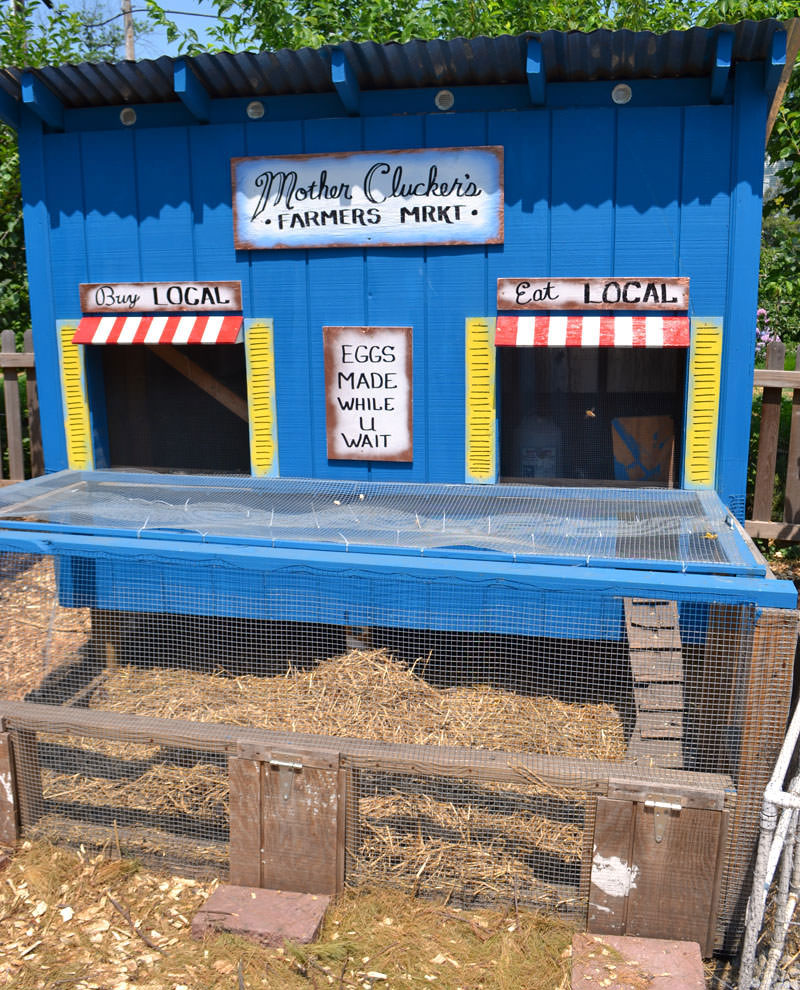
There is no one perfect chicken coop design. If there were, its creator would be extremely wealthy, because providing your flock a safe place to sleep and lay their eggs is one of the most important chicken-keeping decisions you can make. Coops vary in size, materials, and design, with many factors being personal preference. However, there are several important features that all good designs incorporate. Here are some things to consider when building or buying a coop.
1. Size
Allow 2 to 4 square feet of interior floor space per hen, depending on the size of your chickens (i.e., bantams need less space, Jersey Giants need more) and how many waking hours they spend in the coop. If your flock spends all day free-ranging outdoors, then you can probably get away with 2 square feet per hen.
Consider the eventual size of your flock. It’s far easier to start with a larger coop than to add on to your existing coop when your flock grows from five to a dozen or more, so build big.
2. Flooring
Coop flooring is another important consideration. Predators can easily dig and burrow under dirt floors. While concrete floors are impregnable, they can be expensive and often not a DIY option for beginner coop builders. Wood floors can house mites and other parasites, as well as mold and rot if they get wet.
Consider covering plywood with inexpensive vinyl flooring. This makes for easy cleanup and creates an inhospitable environment for mites. Simple to cut and staple down, vinyl is also easy to replace as needed.
3. Elevation
Raised coops are more secure from predators than coops set directly on the ground (unless you pour a concrete floor) and will prevent a wooden floor from rotting underneath. Raising your coop 8 to 12 inches off the ground allows chickens to easily fit underneath, providing them welcome shelter from sun in the summer and from sleet and snow in the winter.

4. Roosts
Provide a minimum of 8 inches of roost space per hen. Again, plan on enough space for the eventual number of hens you’ll be raising. Using 2×4 beams with the 4-inch side facing up works well for roosting bars. The wide, flat side of the board will help keep your chickens’ feet protected from frostbite in winter.
5. Nesting Boxes
You should provide one nesting box for every three to four hens, though the reality is that no matter how many boxes you have, all of your chickens will want to lay in the same one—at the same time. That’s just the way chickens are.
Boxes should be approximately 1 square foot by 1 foot high and positioned lower than your roosts so your chickens won’t be tempted to sleep in them at night. If you live in a very cold climate and frozen eggs are a concern, consider interior boxes that you need to enter the coop to access, instead of exterior boxes that are accessible from outside the coop and therefore more exposed to low temperatures.
6. Ventilation
One-fifth of your coop’s wall space should be vented. Good ventilation is very important year-round. Even in winter, some vents should be left open to allow for airflow, as frostbite is caused more by moisture than by actual cold. Place vents higher than the roosts, though lower vents that can be left open in the summer and closed during the cold months are important, as well.
Cover vents with 1/2-inch hardware cloth to prevent predators from gaining access. Staple or nail the wire in place, and then secure it by screwing furring strips or screws and washers along the edges. Chicken wire is not sufficient to keep out predators. Mice, weasels and snakes can fit through the large holes, and raccoons, dogs and foxes can easily rip it.
7. Latches
Coop doors and nesting- box covers should be fitted with secure latches. Raccoons can turn knobs, untie knots, undo bungee cords, lift latches and slide deadbolts. A predator-proof eye hook with a spring-loaded catch works well on nesting-box lids, while a deadbolt installed at least 4 feet from the ground and a second lower latch secured with a carabineer works well on coop doors.
Incorporating these features into your coop will get you well on your way to successful chicken keeping. Protecting your flock from predators and providing a healthy environment is of utmost importance.




